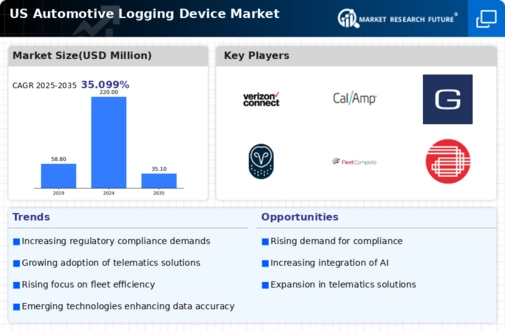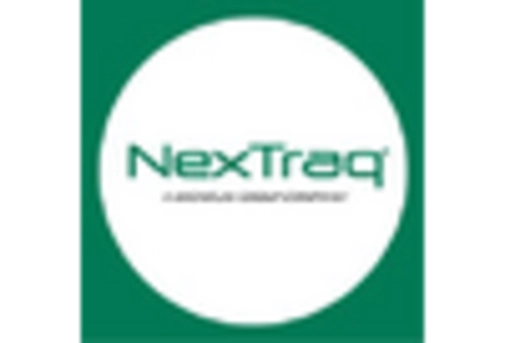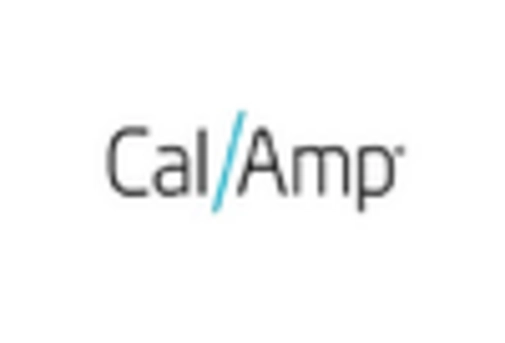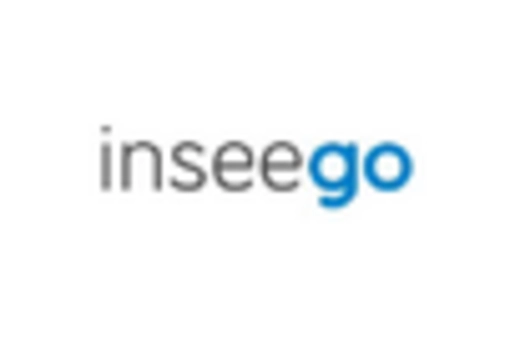The automotive logging device market is characterized by a dynamic competitive landscape, driven by technological advancements and increasing regulatory requirements for fleet management. Key players such as Geotab (US), Samsara (US), and Verizon Connect (US) are at the forefront, leveraging innovation and strategic partnerships to enhance their market positions. Geotab (US) focuses on expanding its data analytics capabilities, while Samsara (US) emphasizes user-friendly interfaces and comprehensive fleet management solutions. Verizon Connect (US) integrates its telecommunications expertise to offer robust connectivity solutions, thereby shaping a competitive environment that prioritizes technological integration and customer-centric services.
In terms of business tactics, companies are increasingly localizing manufacturing and optimizing supply chains to enhance operational efficiency. The market appears moderately fragmented, with several players vying for market share. However, the collective influence of major companies like Omnicomm (US) and Fleet Complete (US) suggests a trend towards consolidation, as these firms seek to enhance their service offerings and expand their geographical reach.
In November 2025, Geotab (US) announced a strategic partnership with a leading telematics provider to enhance its data analytics capabilities. This collaboration is expected to bolster Geotab's position in the market by providing customers with more comprehensive insights into fleet performance, thereby improving operational efficiency. The strategic importance of this partnership lies in its potential to attract new clients seeking advanced analytics solutions, which are increasingly critical in the competitive landscape.
In October 2025, Samsara (US) launched a new suite of AI-driven features aimed at improving driver safety and reducing operational costs. This initiative reflects a growing trend towards the integration of artificial intelligence in fleet management solutions. By enhancing safety protocols and optimizing routes, Samsara positions itself as a leader in innovation, which could significantly influence customer retention and acquisition strategies.
In September 2025, Verizon Connect (US) expanded its service offerings by integrating advanced IoT capabilities into its logging devices. This move is indicative of a broader trend towards digital transformation within the industry, as companies seek to leverage IoT for improved data collection and analysis. The strategic importance of this integration lies in its potential to enhance customer engagement and provide a competitive edge in a rapidly evolving market.
As of December 2025, the automotive logging device market is witnessing trends such as digitalization, sustainability, and AI integration, which are reshaping competitive dynamics. Strategic alliances are becoming increasingly vital, as companies recognize the need for collaboration to enhance technological capabilities. Looking ahead, competitive differentiation is likely to evolve from traditional price-based competition to a focus on innovation, technology, and supply chain reliability, underscoring the importance of adaptability in a fast-paced market.























Leave a Comment